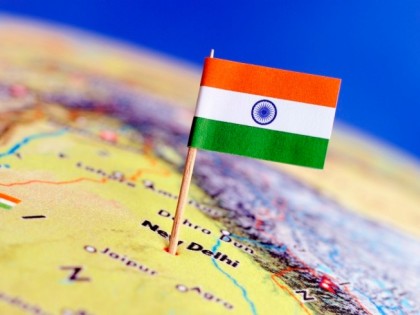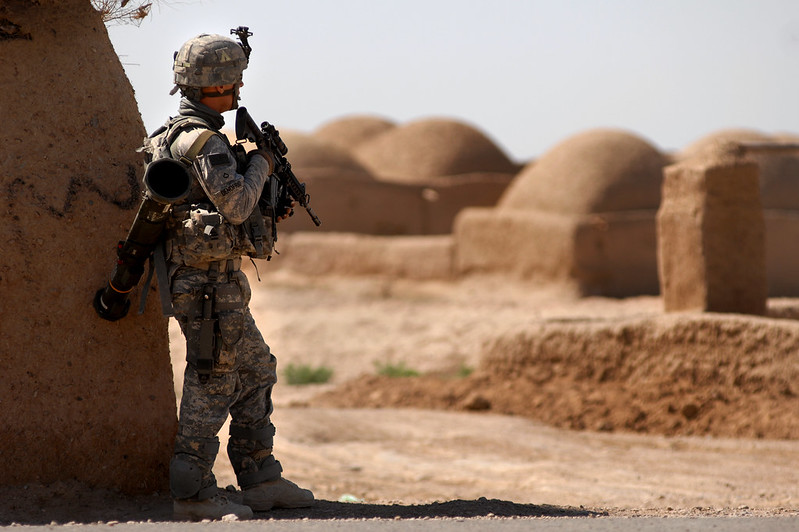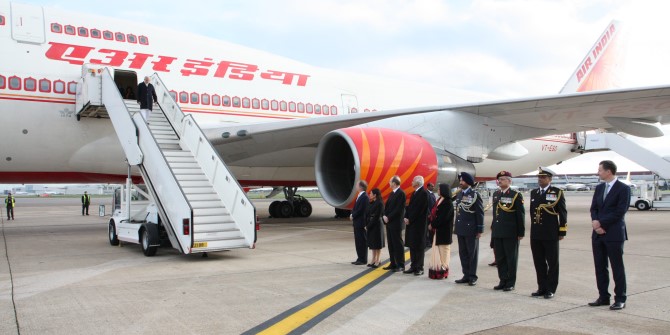Raj Verma asked Indian experts and academics what foreign policy challenges India should prepare to tackle in the new year.
China: Since the new millennium, relations between India and China have been characterised by ‘hot economics and cold politics’ or ‘cooptetion’—economic cooperation and political competition. In recent years, tensions between the two countries have increased due to the border dispute. According to Dr Harsh Pant at King’s College London, “the lingering border dispute between India and China continues to be the single-most important impediment, though increasingly the larger context of this relationship is undergoing a transformation. As the balance of power in Asia changes and India strives to manage the rise of China with its own blend of internal and external balancing, this will assume a bigger profile in Sino-Indian bilateral ties.” It is highly unlikely that relations between the two rising giants will improve in 2014, and will continue to be characterised by ‘cooptetion’ and military confrontation in the medium term.
Pakistan: The enduring Indo-Pakistan rivalry is well known. The Kashmir conflict and cross-border terrorism have historically led to tensions between the two countries. The beheading of an Indian soldier along the Line of Control (LoC) in January this year and incessant ceasefire violations since have vitiated relations between the two countries. LSE Professor Sumantra Bose avers that “cross-border incidents as well as terrorist incidents are symptoms of the deeply conflictual nature of the India-Pakistan relationship. The Kashmir dispute is real and important, but has simply provided a focal point for a multifaceted and deeply rooted antagonism.” The emphasis on security obscures other aspects of the relationship, including a growing appetite on both sides of the border for increased bilateral trade. In the context of increasingly adverse domestic political environments in both countries – the jingoistic right-wing in India and Pakistan’s irredentist military – hindering the diplomatic process, there is an even greater need to re-think India- Pakistan relations in 2014.
Afghanistan: India and Afghanistan have historically enjoyed friendly relations. According to Dr Shanthie D’Souza at the National University of Singapore, the most significant aspect of the India-Afghanistan relationship is that the “long history of cultural and civilisation linkages have been further strengthened by a decade of development assistance, capacity building initiatives and economic opportunities.” India and Afghanistan have mutual economic and strategic interests—as Professor Bharat Karnad at the Centre for Policy Research, New Delhi, puts it: “India needs natural resources, access to Central Asia through Chabahar Port (in Iran), and the mineral-rich Hajigak region as a base for intelligence operations and, if needed, to squeeze Pakistan. Kabul needs Indian capital, technical assistance, development aid, and military assistance.”
However, terrorism and resulting regional instability pose a serious challenge to the relationship. The “challenge remains in terms of establishing regional trade, transit and connectivity by making Afghanistan a land bridge connecting South with Central Asia from which both Afghanistan and Pakistan would derive tremendous economic benefits,” adds Dr D’Souza.
United States: On the eve of Prime Minister Manmohan Singh’s meeting with President Obama in Washington on 27 September, 2013, the media painted a gloomy picture of India-US relations. There were assertions that the relationship between the two largest democracies in the world was ‘oversold’ and experiencing a ‘drift’. Indeed, there is no paucity of disagreements between the two countries: Pakistan, Afghanistan, UN reforms, permanent membership for India of the UN Security Council, and economic challenges such as India’s unwillingness to open its markets. Professor Brahma Chellaney at the Centre for Policy Research underlines that the “India-US strategic partnership is somewhat lopsided and unbalanced because of India’s structural and strategic limitations.” In the new year, Dr Pant believes that “New Delhi and Washington will face the challenge of maintaining stable ties as the United States prepares to leave Afghanistan with help from the Pakistan military. But on larger strategic issues, there is a convergence between the two states that is as striking as it is potent. The relations are likely to only improve over the long term.”
Iran: India has long pursued a careful balancing act between its relationships with Iran and the United States. In recent years, India and Iran have been trying to manage their economic, energy and political cooperation in the shadow of US and European Union sanctions. A potential US-Iran rapprochement will likely ease existing diplomatic and economic pressure on India in this context.
Iran under President Hassan Rohani is expected to enhance cooperation with India in the areas of energy, connectivity, trade, and on the issue of Afghanistan. Both countries also seek to enhance connectivity through the International North South Transport Corridor (INSTC) and the Chabahar Port. However challenges remain in the bilateral relationship. “The biggest challenge for India-Iran relations is that India does not have a clearly articulated foreign policy strategy towards Central Asia or the Gulf,” explains Professor Lawrence Sáez at SOAS. “At a bilateral level, India does not engage directly with Iran, partially as a result of US pressure and mostly as a result of India’s own inertia and strategic incompetence. At an international institutional level, India has shown little enthusiasm for including Iran as an active participant in SAARC.”
Sri Lanka: India and Sri-Lanka have had cordial relations in the new millennium. LSE’s Dr Rajesh Venugopal explains that “security cooperation, trade and investment, China and the Tamil situation are important factors in India-Sri Lanka relationship.” Human right violations against Tamils and rehabilitation of Tamils in the national mainstream in Sri Lanka after the end of the civil war have strained diplomatic relations between the two countries. Ceteris paribus, Dr Venugopal believes that “relations are unlikely to improve in the next year simply because India will enter into election mode, and every party will be under pressure to attack Sri Lanka in order to win the Tamil Nadu vote.” However, defence ties between the two countries would continue as usual through joint training, sharing of warfare expertise and military exchanges.
Bangladesh: Since Sheikh Hasina and her Awami League came to power five years ago, there has been tremendous goodwill for India in Bangladesh. There is a wide consensus that Sheikh Hasina has largely delivered on Indian security concerns by cracking down on terrorism directed against India from Bangladeshi soil. However, contentious issues remain in the bilateral relationship: the division of common river waters, the land corridor that India wants through Bangladesh to connect West Bengal to the north-eastern states, the continuing influx of undocumented migrants from Bangladesh through the porous border and the continuing presence of anti-India forces in Bangladesh despite the recent crackdown. “India’s giant size and Bangladesh’s smallness mean that it is difficult to negotiate equally to reach fair outcomes between the two countries,” says LSE’s Professor David Lewis. “The long border means Bangladeshis feel encircled and enclosed by India, leading to distrust and border tensions.”
Nepal: In recent years, the increasing dominance of Maoism in Nepal’s domestic politics, along with the strengthening economic and political influence of China, has led the Nepalese government to gradually distance itself from India. Nepal has also become a haven for terrorists and separatists operating in India: the recent arrests of two high profile terrorists – Abdul Karim Tunda and Mohammed Ahmed Sidibappa – have brought the India-Nepal border into sharp focus. India has been seeking Nepal’s cooperation in managing the border through several bilateral mechanisms. However due to domestic political turmoil, lack of political will and a resource crunch, Nepal has been unable to effectively cooperate with India. But that could change if Nepal sees increasing political stability in 2014.
Burma: Political developments in Burma over the last two years have opened a new chapter in India-Burma relations. Burma, like Vietnam, is an important pillar in India’s ‘Look East’ policy. Burma’s internal political dynamics will determine the course of bilateral relations: Burma’s transition from authoritarianism to democracy, communal and ethnic violence and implementation of bold reform initiatives presents immense challenges as well as opportunities for India. Challenges include the long-running border problems (compounded by the diplomatic row over pillar number 76 in the north-eastern Indian state of Manipur), Indian support for pro-democratic forces, China’s influence and active role in state building in Burma and the uninterrupted flow of weapons from Burma for the rebels in north-east India among others. On the commercial front, India would like to gain access to Burma’s oil and gas reserves but faces competition from other countries especially China. But given the limitations of Indian public sector investment in Burma due to bureaucratic hurdles, private-sector investment would have to increase in the new year in order to consolidate ties.
Vietnam: Bilateral ties between India and Vietnam have improved significantly in recent years. Due to its antagonistic relations with China, Vietnam is a key component of India’s ‘Look East’ policy. Although the two countries have enhanced their political and security cooperation, there is still a need to strengthen commercial and economic ties. Both countries need to think creatively about expanding investment opportunities, especially in the energy, steel and pharmaceutical sectors. This can be done by establishing stronger institutional mechanisms that review and develop the economic relationship on a regular basis. The burgeoning relationship between the India and Vietnam raises concerns in China and may have repercussions on Sino-Indian relations in 2014 and onwards.
About the Author
Dr Raj Verma is a Bagri Fellow at the School’s Asia Research Centre and a Visiting Fellow at Jilin University, China.









India need to look for new opportunities rather than conventional methods of idiotic diplomacy. Prior to Pakistan and China, India first need to concentrate on Nepal & Bangladesh with that Myanmar too. India should kick out option of pro-democracy in Myanmar, but soon look for military export as well as trade, oil exploration in Myanmar. India should have extradition treaty and special treaty like attack on Myanmar would be considered as attack on India. Defence export should be like exporting frigates, fighter planes, war tanks to Myanmar. Now with Myanmar Co-operation, India-Myanmar-Thailand-Vietnam should come with Hindu-Bhuddist Unity and Co-operation treaty, that Hindus refugees (forcefully settled in West Bengal, Tripura & Assam) given a self-determination status with oppressed Hindus as Independent country bifuricated from Islamic Bangladesh and as well as Bhuddist Chakmas given an independent country as homeland in Chittagong Hill Tracks. Now comes Nepal. India should encourage the Nepalese People, that it is hard for Nepalese to exist as Independent Country. So India should look to help Nepalese people for Nepal merger within Indian Union. This eliminate poverty, enhance hydel power project bordering UP-Nepal border.
Interestingly, seven out of these ten countires are India’s neighbours. Iran and Vietnam are in distant neighbourhood and USA is a resident power in South Asia. When all the challenges of India lies in its own neighbourhood, then the rise of India as a worldd power is a highly questionable proposition. It is true that many strategic thiners see India rising as a world Power. But given the monumental challenegs that India faces in its neighbourhood, the rising India is greatly limited to south Asia.